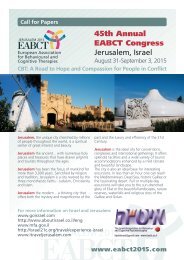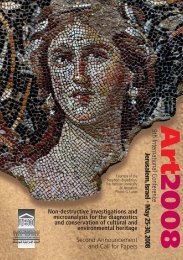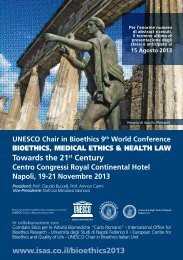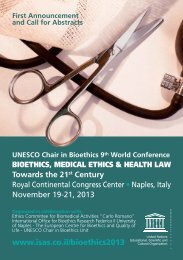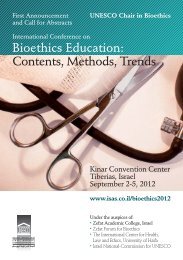BIOETHICS, MEDICAL ETHICS & HEALTH LAW Towards the 21st ...
BIOETHICS, MEDICAL ETHICS & HEALTH LAW Towards the 21st ...
BIOETHICS, MEDICAL ETHICS & HEALTH LAW Towards the 21st ...
- No tags were found...
Create successful ePaper yourself
Turn your PDF publications into a flip-book with our unique Google optimized e-Paper software.
Tours and Sightseeing9also includes beautiful cloisters and a museum.Santa Chiara was founded in 1310 by Robert <strong>the</strong> Wise (a.k.a. Robert of Anjou).The basilica and convent were designed in an austere Provencal-Gothic style andcompleted in 1328.The church interior was given a Baroque makeover in 1742-57, which was sadlydestroyed by an Allied bomb in August 1943. Santa Chiara was rebuilt in 1953in its original style.The cloister of Santa Chiara is reached through a courtyard on <strong>the</strong> north side of<strong>the</strong> church, near <strong>the</strong> campanile. Dating originally from <strong>the</strong> 14th century, <strong>the</strong> largecloister was transformed into an elegant garden by Domenico Antonio Vaccaro in1742. The beautiful majolica tiles and terracottas date from this period. Survivingfrom <strong>the</strong> Middle Ages is <strong>the</strong> austere friar’s refectory, with a fountain in <strong>the</strong> middle.The cloister includes a museum (Museo dell’Opera di Santa Chiara), with displaysillustrating <strong>the</strong> history of <strong>the</strong> convent.The Museum of CapodimonteOnce it was one of <strong>the</strong> Royal Residencesnear <strong>the</strong> city, on <strong>the</strong> Hill of Capodimonte.Today it holds <strong>the</strong> extraordinary collectionof <strong>the</strong> Farnese, one of <strong>the</strong> most importantfamilies of <strong>the</strong> Italian Renaissance anda variety of o<strong>the</strong>r collections, from paintingand sculpture to drawings, arms,decorative arts with a wealth of examplesof great refinement.Sansevero ChapelIts origin dates to 1590 when JohnFrancesco di Sangro, Duke ofTorremaggiore, after recovering from aserious illness, had a private chapel builtin what were <strong>the</strong>n <strong>the</strong> gardens of <strong>the</strong>nearby Sansevero family residence, <strong>the</strong>Palazzo Sansevero. The building wasconverted into a family burial chapel byAlessandro di Sangro in 1613 (as inscribedon <strong>the</strong> marble plinth over <strong>the</strong> entranceto <strong>the</strong> chapel). Definitive form was givento <strong>the</strong> chapel by Raimondo di Sangro,Prince of Sansevero, who also includedMasonic symbols in its reconstruction.Until 1888 a passageway connected <strong>the</strong>Sansevero palace with <strong>the</strong> chapel.The chapel received its alternative name




